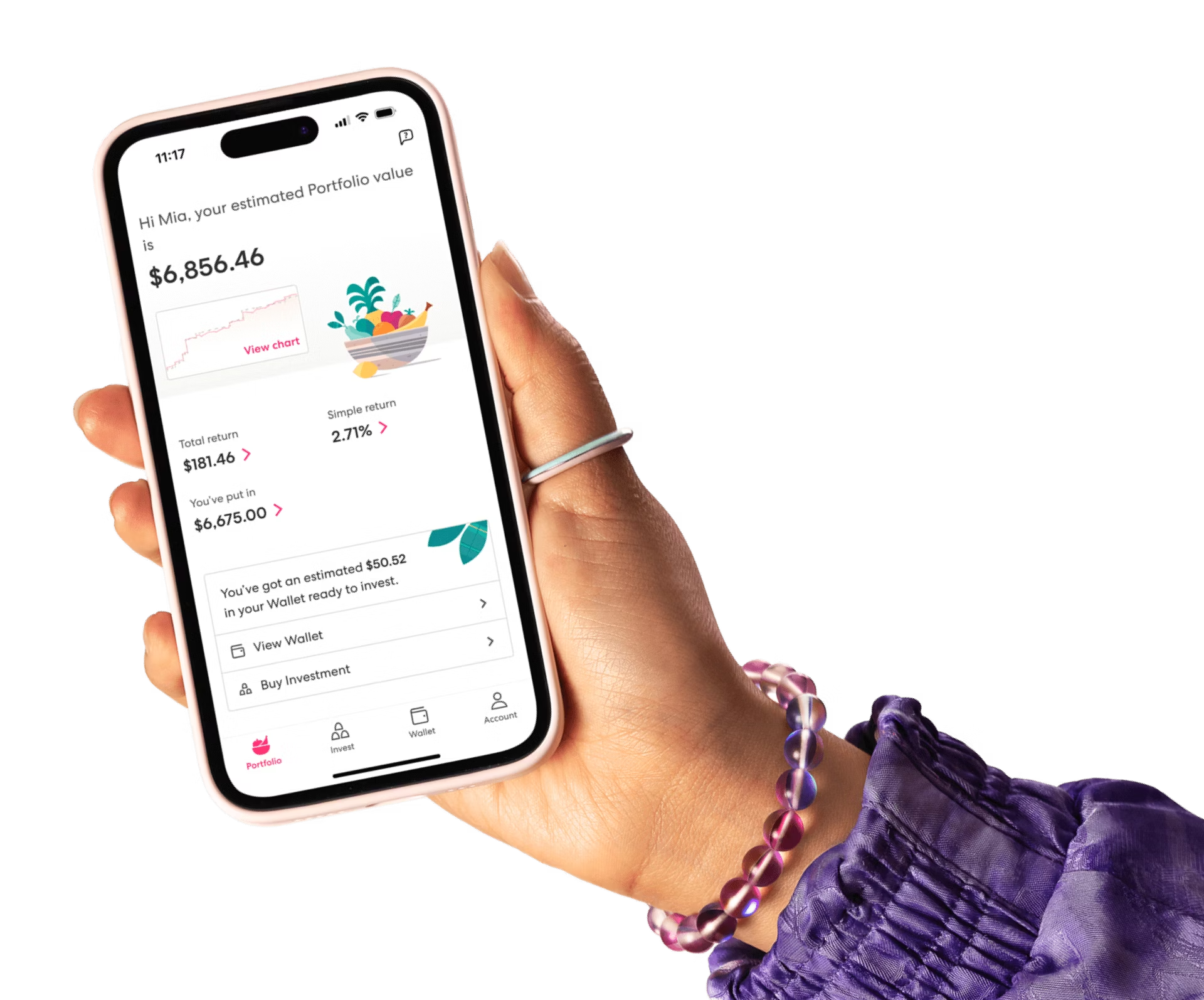Sharesies is carbon neutral!

At Sharesies, our purpose is to create financial empowerment for everyone. To do that, we have to be a sustainable business to ensure we’re going to be around for our investors for the long haul.
Our B Corp accreditation helps us figure out how to do that, by breaking down sustainable impact into five areas. One of those areas is the environment, so we’ve been on a journey to understand our environmental impact, where we can improve, and how we can offset our current impact to become carbon neutral—and therefore, a more sustainable business!
This is our first year, but we’ve already learnt a lot, and we’re excited for the journey ahead of us and the opportunities to do better. This is an overview of our experience so far—to find out more, read our carbon inventory report [PDF, 1.54 MB].
So what is carbon neutrality?
To have a carbon neutral business, you have to:
measure the amount of CO2 your business is adding to the atmosphere annually
have that information in a publicly available report
offset your impact by contributing to projects that take CO2 out of the atmosphere (through buying carbon credits)
commit to reducing your CO2 output where possible. This is important because the ultimate goal is to not have to offset at all, which is good for the planet (no extra CO2) and good for your business (no costly carbon credits to buy).
Our reporting journey
In early 2021, we connected with the amazing people at Ekos. As this was our first reporting year, there was a lot to learn about our emissions and what information we needed to find to get a clear idea of our impact. It took us about 3 months to gather data from all over the business, from suppliers, and to set up new processes—we expect next year to be much simpler!
What we learnt
Supply chains are important
We discovered that 99% of our emissions are scope 3 (indirect), meaning that they come from our supply chain (the companies, goods, and services that we use). This shows that if we’re going to tackle the climate crisis, we have to do it together as a whole system.
Create good business ecosystems where you can
As a B Corp, Sharesies prioritises the use of other B Corp suppliers where possible. If we can’t get a B Corp, we look for carbon neutral, fair trade, ethical companies first. We love to work with businesses that share our values and collectively uplift each other.
Where most of our emissions come from
The biggest area of emissions by far (82%) was ‘purchased goods’, or in Sharesies’ specific case, our data storage centres. As a digital company that operates online, we process and hold a lot of data for our investors, and that data needs to be held somewhere.
Sharesies uses AWS (Amazon Web Services) to do this, utilising their storage centres in Australia. These storage centres use electricity to run the servers and to keep them cool. Australia's energy sources for electricity are primarily fossil fuels, so at the base of this chain, it’s these fossil fuels that impact our emissions.
AWS announced that they’re setting up data centres in New Zealand in 2024. New Zealand's electricity supply is primarily renewable, so when this switch happens, it will greatly help our emissions profile.
What we’re doing well
We don’t own any company vehicles (and most staff commute in a green way!), we dispose of our waste responsibly, our scope 1 and 2 emissions are extremely low, and we have no physical materials that are impacting the earth.
What we couldn’t measure
There were a couple of areas that we couldn’t report on, simply because our suppliers don’t have the data available. So we need to start a dialogue with, for example, the freight providers and rental car companies we use to gather data that will help us get a fuller picture of our emissions.
What we’re working on next
One area we didn’t have data for is how our staff commute to and from work. Wonderfully timed, local start-up Hitch approached us to take part in a trial of their carpooling app and gather data on staff commuting behaviour. So not only can we report on this in our next carbon report, but we now know that only 3% of our staff travel to work in their own car. Go team!
We’re also working with Ekos to figure out the target we should be setting for ourselves to align with the Paris Climate Agreement. As a fast-growing company, this won’t be easy, but we’re up for the challenge.
What happens from report to offsetting
The report showed [PDF, 1.54 MB] that during 2020, we emitted 502.26 tons of CO2 (t CO2e). We’re committed to finding ways to reduce that where possible, and we’ve offset those emissions by giving money to projects via Ekos’ carbon credit purchasing. These projects take CO2 out of the atmosphere, so we can balance out the environmental impact we’re having.
We know that this isn’t the long-term solution or the ultimate goal, but we’re proud to be giving money to projects that are having positive social and environmental impacts across Aotearoa and the Pacific.
Carbon neutrality achieved!
By having the carbon report, finding ways to improve, and offsetting our impact, we are now a certified carbon neutral business. Yay! Knowledge is power, so now we know which areas we need to tackle or keep an eye on, and areas we’re actually doing pretty well in.
Carbon reporting can be a long and tricky process, so enlisting the help of a business like Ekos to guide us was a huge help. I’m incredibly grateful to be surrounded by a supportive and enthusiastic team at Sharesies who know the value of protecting our environment and reporting on our emissions!
We’ll be data gathering again for 2021 around February-March 2022, and will go through this process annually to recertify. For full details, check out our carbon inventory report [PDF, 1.54 MB].
Ok, now for the legal bit
Investing involves risk. You aren’t guaranteed to make money, and you might lose the money you start with. We don’t provide personalised advice or recommendations. Any information we provide is general only and current at the time written. You should consider seeking independent legal, financial, taxation or other advice when considering whether an investment is appropriate for your objectives, financial situation or needs.
Join over 800,000 investors




